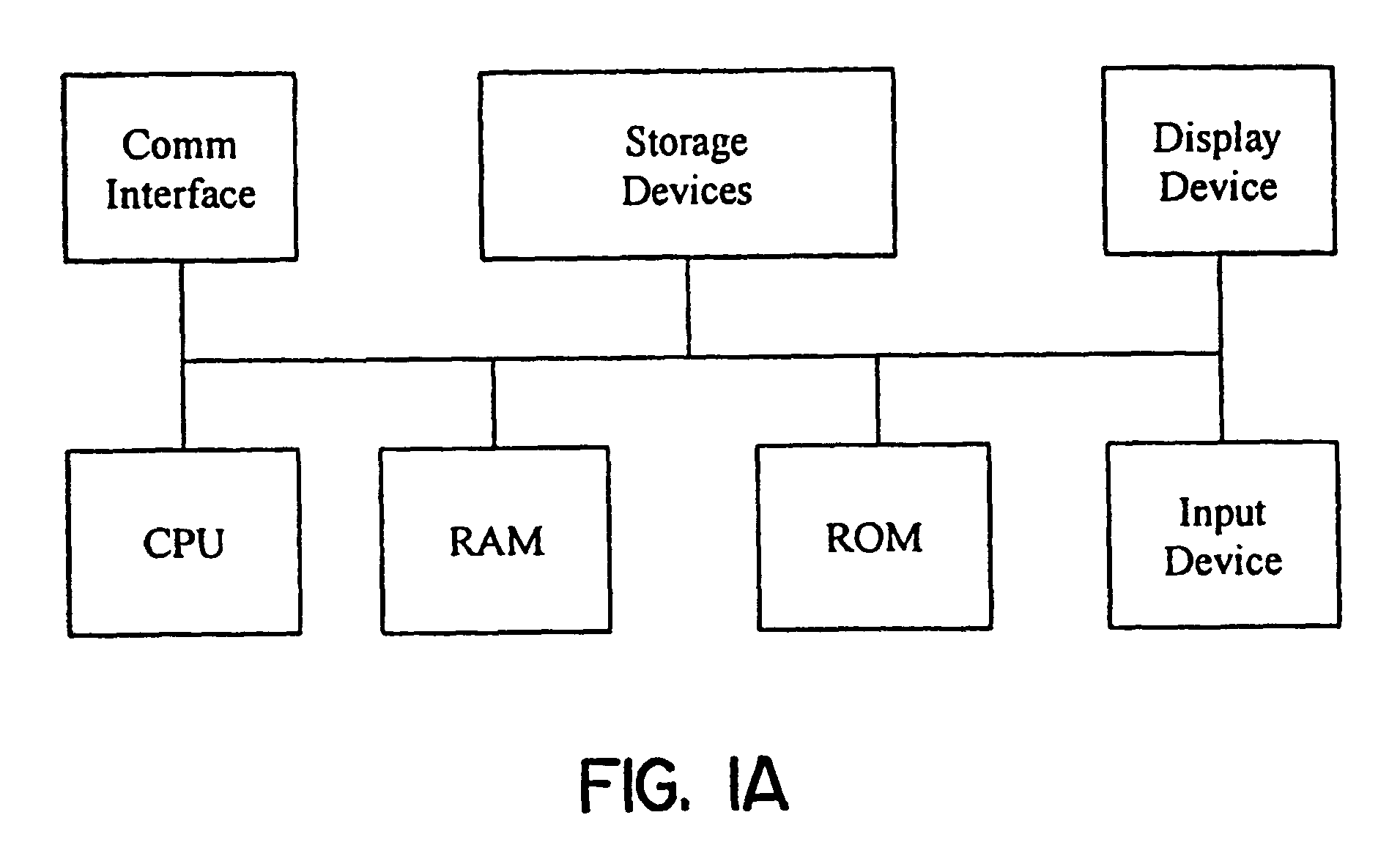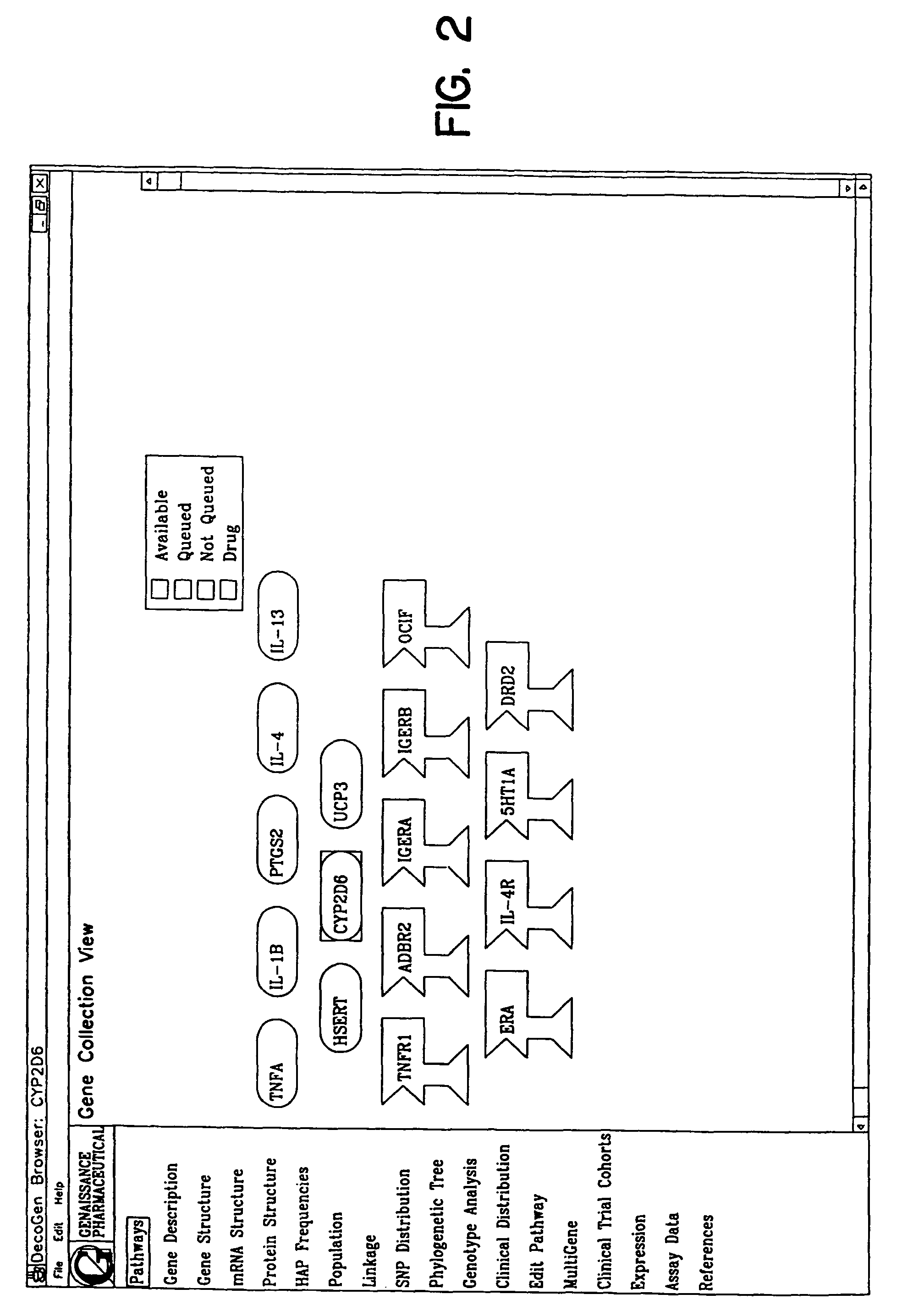Methods for obtaining and using haplotype data
- Summary
- Abstract
- Description
- Claims
- Application Information
AI Technical Summary
Benefits of technology
Problems solved by technology
Method used
Image
Examples
example 2
I. EXAMPLE 2
[0716]1. Provision Of Clinical Data
[0717]DNA sequence information for a cohort of normal subjects was obtained and entered into the database as described previously. For this example, 134 patients, all of whom came to the clinic having an asthmatic attack, were recruited. Each patient had a standard spirometry workup upon entering the clinic, was given a standard dose of albuterol, and was given a followup spirometry workup 30 minutes later. Blood was drawn from each patient, and DNA was extracted from the blood sample for use in genotyping and haplotyping. Clinical data, in the form of the response of the asthmatic patients to a single dose of nebulized albuterol, was obtained from the asthmatic patients, as described previously (Yan, L., Galinsky, R. E., Bernstein, J. A., Liggett, S. B. & Weinshilboum, R. M. Pharmacogenetics, 2000, 10:261–266) The clinical data was entered into the database, and displayed as in FIG. 29B.
[0718]2. Determination Of ADBR2 Genotypes And Hap...
PUM
| Property | Measurement | Unit |
|---|---|---|
| Fraction | aaaaa | aaaaa |
| Fraction | aaaaa | aaaaa |
Abstract
Description
Claims
Application Information
 Login to View More
Login to View More - R&D
- Intellectual Property
- Life Sciences
- Materials
- Tech Scout
- Unparalleled Data Quality
- Higher Quality Content
- 60% Fewer Hallucinations
Browse by: Latest US Patents, China's latest patents, Technical Efficacy Thesaurus, Application Domain, Technology Topic, Popular Technical Reports.
© 2025 PatSnap. All rights reserved.Legal|Privacy policy|Modern Slavery Act Transparency Statement|Sitemap|About US| Contact US: help@patsnap.com



